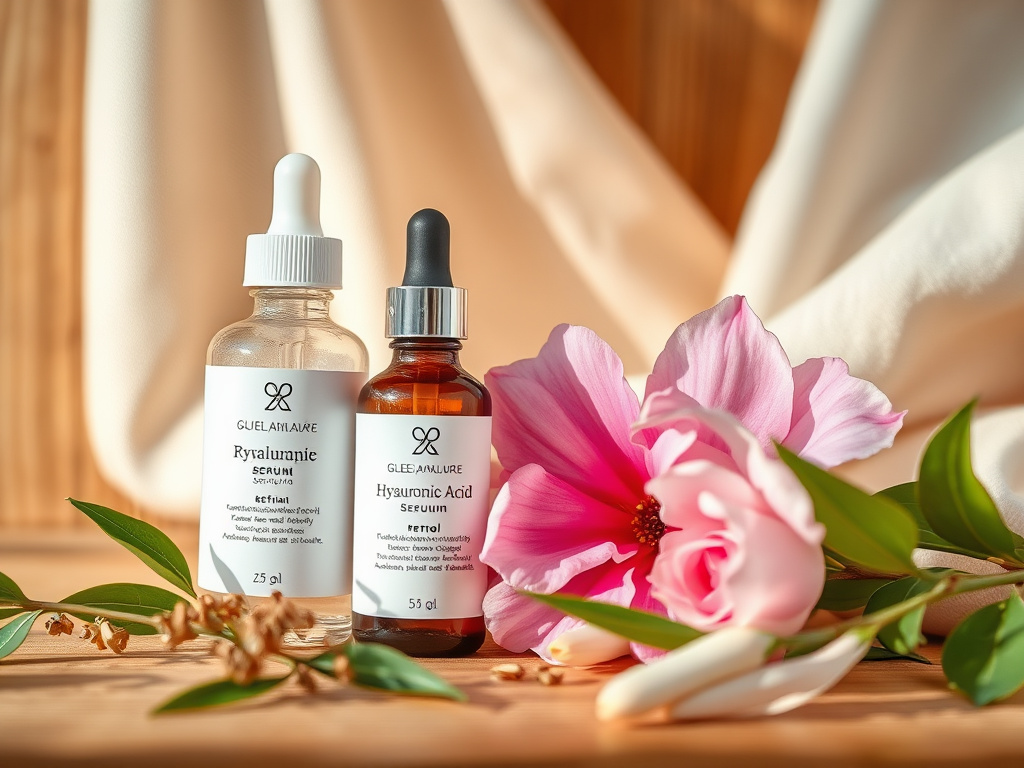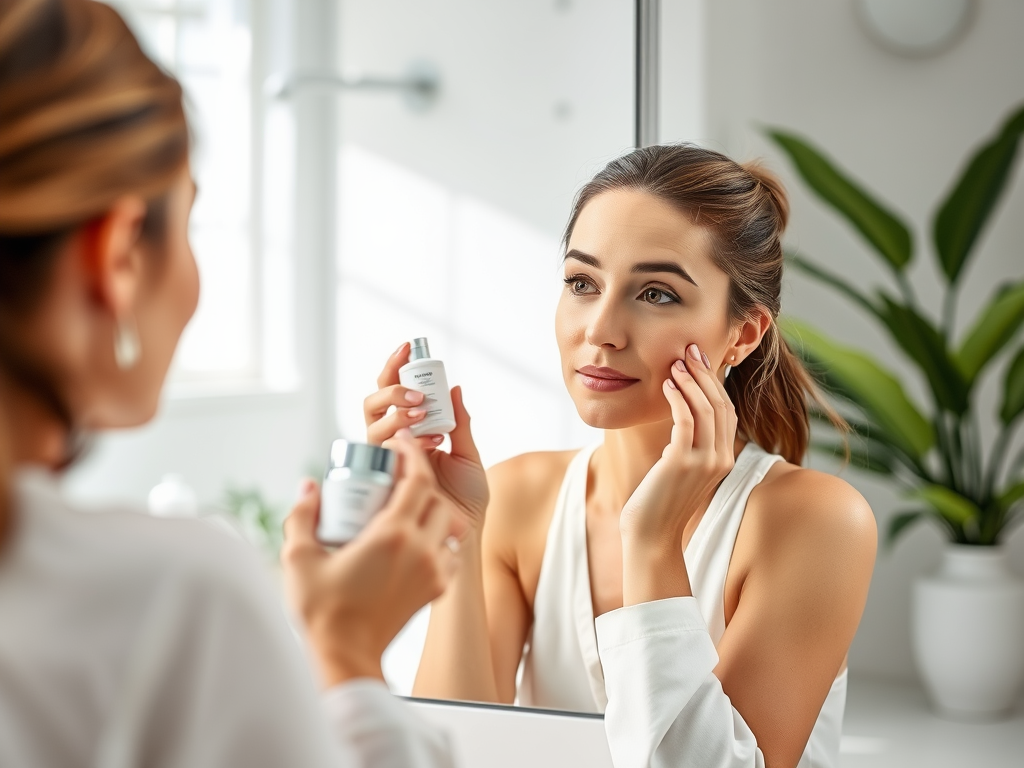In the world of skincare, achieving that coveted glow often requires a combination of effective ingredients working in harmony. The pairing of retinol and hyaluronic acid has emerged as a powerful duo in the quest for radiant, youthful skin. Each ingredient serves its unique purpose, yet when combined, they address numerous skin issues and enhance each other’s benefits. While retinol is celebrated for its ability to rejuvenate the skin by stimulating cell turnover, hyaluronic acid is sought after for its unparalleled hydrating properties. Together, they create a synergistic relationship that transforms skincare routines into a luxurious experience, leading to improved skin texture, tone, and overall health. Many skincare enthusiasts are eager to understand how to integrate these two ingredients into their daily regimen effectively.
Understanding Retinol

Retinol, a derivative of vitamin A, is a powerhouse ingredient with origins that date back several decades. Renowned for its versatility, retinol is often recommended by dermatologists for its ability to tackle a variety of skin concerns. It works by promoting cell turnover, which helps to remove dead skin cells and reveal fresher, healthier skin underneath. This process not only reduces the appearance of fine lines and wrinkles but also improves skin texture and tone, giving a more radiant finish. However, it’s crucial to understand that retinol can cause sensitivity in some users, which means easing into its application can be beneficial for optimal results. With consistent use, you can expect to see a significant improvement in your complexion, making retinol a staple in many skincare routines.
The Role of Hyaluronic Acid

Hyaluronic acid, on the other hand, is a natural substance found in the human body that plays a pivotal role in maintaining skin hydration. What makes it exceptional is its ability to hold up to 1000 times its weight in water, making it one of the most effective humectants available. This hydration is essential for plump, youthful skin, and hyaluronic acid works to keep the skin barrier intact, ensuring that moisture is retained throughout the day. Beyond its hydrating capabilities, it also possesses soothing properties that can help reduce redness and irritation, providing comfort to those with sensitive skin. Its lightweight texture allows it to layer seamlessly without feeling heavy, enabling easy incorporation into any skincare routine. Therefore, hyaluronic acid not only hydrates but also enhances skin resilience and softness.
The Power of Combining Retinol and Hyaluronic Acid
When retinol and hyaluronic acid are combined, they create a skincare powerhouse that synergistically enhances benefits while minimizing drawbacks. The hydrating effects of hyaluronic acid help to buffer the potential irritation caused by retinol, allowing users to enjoy the rejuvenating properties without compromising skin comfort. This complementary relationship makes it easier for individuals to incorporate retinol into their routine without the searing dryness that often accompanies its use. Moreover, when layering, hyaluronic acid can effectively penetrate the skin and create a moisture-rich environment that facilitates better absorption of retinol. This dynamic pairing addresses common issues associated with aging, such as fine lines, dullness, and uneven skin tone. Below is a comparison table highlighting their key benefits:
| Ingredient | Key Benefits |
|---|---|
| Retinol |
|
| Hyaluronic Acid |
|
Application Tips
For those looking to reap the rewards of using retinol and hyaluronic acid together, proper application is critical. Start with the retinol application, ensuring your skin is clean and completely dry to avoid irritation. After applying retinol, wait for a few minutes to let it absorb before layering your hyaluronic acid. This sequence allows hyaluronic acid to trap moisture in your skin effectively. It’s generally recommended to begin with retinol a few times a week, gradually increasing frequency as your skin builds tolerance. Additionally, always finish with a moisturizer to seal in hydration. Below is a recommended skincare routine outline:
- Cleanse skin thoroughly.
- Pat skin dry before applying retinol.
- Use hyaluronic acid serum.
- Seal in moisture with a moisturizer.
- Apply sunscreen during the day.
Potential Side Effects and Considerations
While retinol is effective, it’s essential to consider potential side effects, especially for beginners. Common reactions include dryness, flakiness, and irritation, particularly when first incorporating the ingredient into your routine. However, hyaluronic acid can serve as a buffer against these effects, providing essential hydration that helps mitigate discomfort. Start with a lower concentration of retinol and gradually increase usage as your skin acclimates. Always take precautions when starting retinol by performing a patch test and consulting with a dermatologist if you have any concerns. Also, the importance of applying sunscreen cannot be overstated, as retinol can increase sensitivity to UV rays.
Conclusion
In summary, the combination of retinol and hyaluronic acid offers a multifaceted approach to skincare that addresses a variety of concerns ranging from texture to hydration. This duo not only promotes younger-looking skin but also enhances your skincare routine’s overall effectiveness. By carefully layering these ingredients and adjusting your application frequency, anyone can attain glowing, resilient skin. However, remember that consulting with a skincare professional can provide you with personalized advice tailored to your unique skin type and needs.
Frequently Asked Questions
- What skin types can benefit from retinol? Retinol is generally suitable for all skin types, but those with sensitive skin should start with lower concentrations.
- How often should I use retinol and hyaluronic acid? Starting with retinol 2-3 times a week and using hyaluronic acid daily can yield optimal results.
- Can I use both ingredients in the same routine? Yes, just ensure to layer them properly and consider using a moisturizer to seal in hydration.
- Will hyaluronic acid prevent retinol-related irritation? While it can help soothe the skin and provide moisture, it is advisable to monitor your skin’s response to retinol and adjust usage accordingly.
- Any tips for beginners using retinol? Start with a low concentration, gradually increase frequency, and always use sunscreen during the day.



